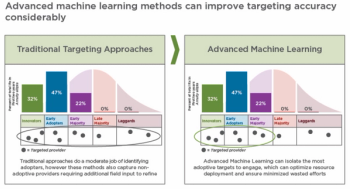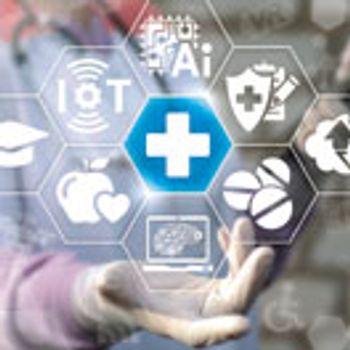
How machine learning can provide an on-demand portfolio-wide view of optimal provider targeting and related field deployment.

How machine learning can provide an on-demand portfolio-wide view of optimal provider targeting and related field deployment.

Organizations need to be correctly set up to deploy AI and machine learning. A new approach to processes and content is often required, write Jan van den Burg and Abid Rahman.

Aiforia Technologies CEO Kaisa Helminen talks about the benefits of pharma embracing digital technologies, especially AI-assisted image analysis in the field of histopathology.

Technology grabbing the attention of watchful industry

Amid new findings on today’s C-suite mood and approach to digital transformation, experts-in a panel discussion and wider examinations by Pharm Exec editors-explore the intersection of data and technology and the areas that must evolve to meet the digital health demands of tomorrow.

Despite the buzz, physicians have limited familiarity and understanding with the burgeoning category of nucleic acid-based therapies, writes Meghan Oates-Zalesky.

Most emerging pharma companies still struggle to amass the computing power and assemble the teams to make use of the vast amounts of data now available to them, write Beth Beghou and Patrick Lezark.

In comparison with other industries, the use of AI is modest in life sciences. However, even within life sciences, adoption of AI in regulated environments, such as in the R&D value chain, is further behind. Sivakumar Thiagarajan

Mike Kean and Billy Tamulynas discuss the key components of growth-ready technology for early-stage pharma companies and how to make optimal use of them.

Getting real about the R&D capabilities required to win in the gene therapy space.

AI has huge potential, but the key to ROI is in the application, writes Alan White.

With a growing abundance of clinical and health information now available and achievable, the need for industry to apply common structures and rules to interpret and act on this data is critical.

Realizing the full potential of enabling technologies such as AI and machine learning in measuring treatment value and outcomes.

In keeping pace with the digital transformation, pharma companies are doing pretty well with data and infrastructure, but a fundamental reshaping of operating models remains the biggest hurdle to moving forward.

While commercial websites can employ analytics to gain better snapshots of their visitors, pharma faces far greater challenges in using technology as a way to track and understand its consumers.

Pharm Exec speaks to Katya Svoboda, Taneesha Chawla, and Tanvi Ahuja about the growing practice of applying AI and machine learning in value-based and outcomes-based contracts.

The importance of KOIs in tapping into today’s market mindset.

The key steps to evading automation-fueled data crises.

William Golden, founder, chairman and CEO of Noveome Biotherapeutics, talks about the potential of the company's lead product, ST266.

Sathyanarayanan Krishnamurthy looks at the potential impact of Pharma 4.0 on product development and regulatory operations.

Biopharma companies hungry for digital talent must evaluate their real estate portfolio and workplace strategies to access new talent pools, says Joanne Henderson.

It is worth keeping patients, clinicians, pharmacists and the wider public front of mind when evaluating priorities and best next steps towards Identification of Medicinal Products(IMDP) and other emerging standards, writes Frits Stulp.

Every big shift will stir up dissenters, but these negative forces can actually offer a useful contribution if their concerns are fed into a continuous change program. This could make all the difference in regulatory information management transformation, writes Steve Gens.

Patient support program providers should incorporate new technologies for more effective processes, but this should be matched with empathy, human connectivity and personalized clinical interventions, writes Tommy Bramley.

Many real-world data sources contain unstructured text, making it difficult and time-consuming to glean actionable insights from the data. Natural language processing technology can alleviate this problem, writes Jane Z. Reed.